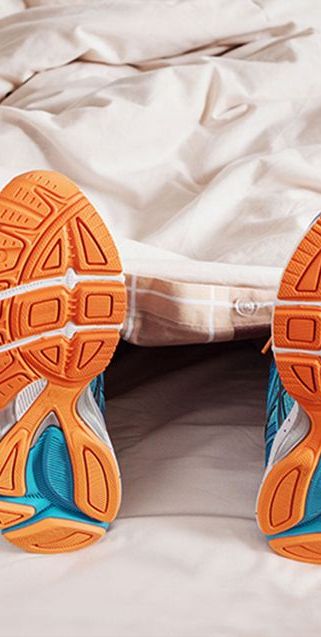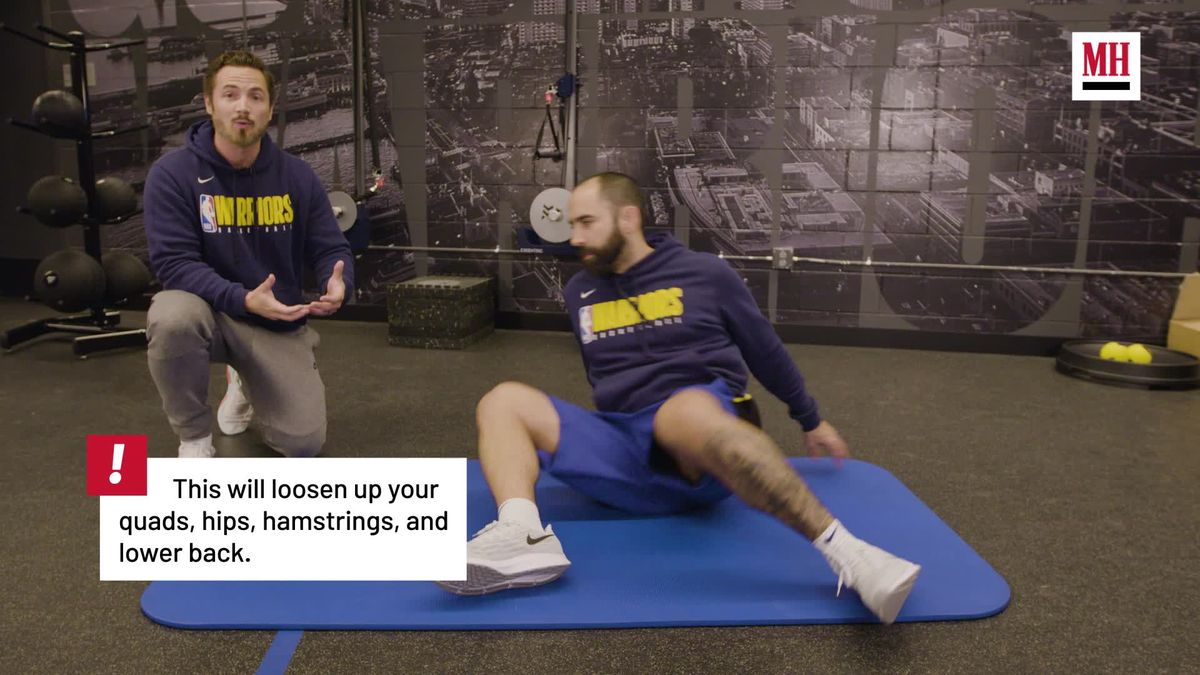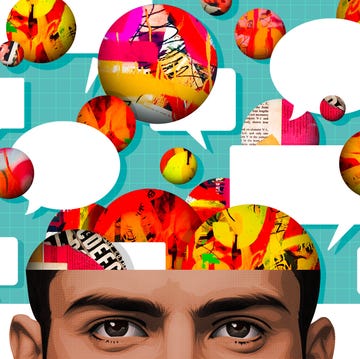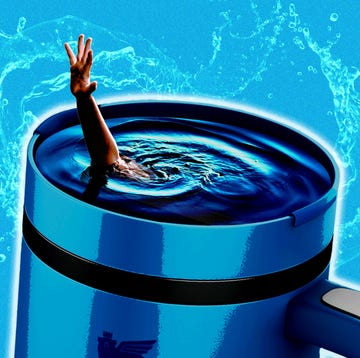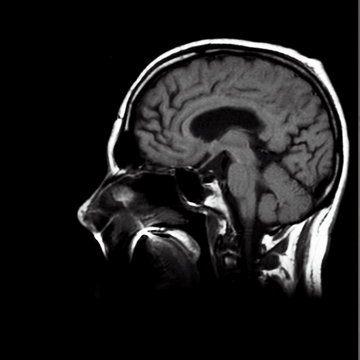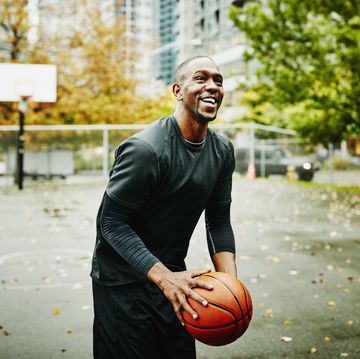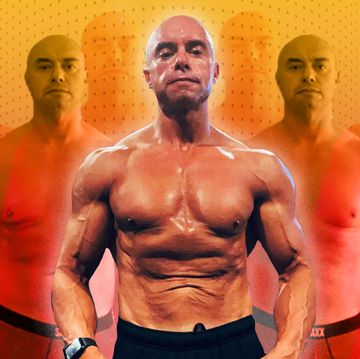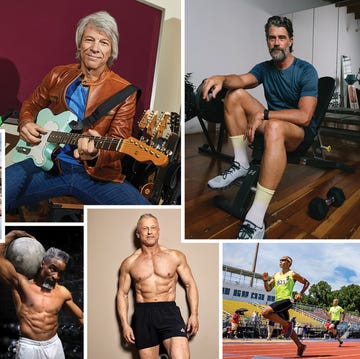Tom Brady, noted underachiever that he is, aims to be in bed by 8:30 p.m. LeBron James plans his life around nabbing ten hours of shut-eye. Justin Verlander, the Cy Young–winning Houston Astros ace, clocks between ten and 12 hours every night. (And he does it sleeping next to Kate Upton.) In the past few years, the world’s premier athletes have discovered a new performance-enhancing supplement for their training regimens: sleep.
A number of recent and tantalizing studies have suggested that simple, restorative sleep can help you think, perform, and recover better. It’s compelled the world’s leading players (often prompted by their team’s sleep coaches) to reprogram their social lives and change their priorities. It’s why pro teams’ practice facilities include nap rooms—the Red Sox turned an old utility room into one, and the Warriors’ new Chase Center includes individual sleep pods. They’re reclining chairs with caps over the top that block out noise and light, but still: sleep pods!
How sleep improves performance
Sleep—not training or working for another hour—is when your body gets stronger and your mind gets sharper. You break down your muscles in training, but rest is when the fibers repair themselves and become more powerful. And all those skills and memories you acquire in a day are encoded while the lights are out. Lose sleep and your neurons start firing more slowly and working together less efficiently. Your reaction time, your speed, and your focus all degrade. Even just three nights of crappy sleep has been shown to drop your bench press by 20 pounds. And in the long run, you’re cueing up obesity, heart disease, stroke, and other health troubles. “The research that’s coming out now is unequivocal,” says MH advisor W. Christopher Winter, M.D., the neurologist who first figured out—more than a decade ago—that jet lag was related to Major League Baseball teams losing games. “People who sleep more and sleep better perform better, both in the short and the long term.” You might not need ten hours like an elite athlete. But you should shoot for seven to nine, and most of us aren’t even coming close.
What does more sleep really get you?
Cheri Mah, M.D., knows better than most the dividends sleep can pay. In 2011, as a researcher at Stanford’s Sleep Disorders Clinic and Research Laboratory, she published the study that catapulted the subject of sleep into clubhouses across the country. Dr. Mah required a group of players on Stanford’s men’s basketball team to snooze at least ten hours a night. (How do you get college students to sleep more? Make them spend more time in bed—for almost everyone, more time in bed leads to more time asleep, she says.)
No one expected more sleep to be bad for the players, but the results were a shock: Free-throw percentages increased by 9 percent, successful three-point field goals jumped 9.2 percent, and injuries dropped to boot. “They all improved,” says Dr. Mah, who’s now with the University of California, San Francisco. Related studies she conducted showed that with more sleep, college swimmers improved their times, soccer players sprinted faster and reported increased vigor, and tennis players saw their accuracy increase in serves and shots. Basically, both their brains and their bodies functioned better. “Then my story became: How do I apply this?”
One of the first pro teams Dr. Mah consulted for was the Golden State Warriors. That was in 2014, toward the beginning of their multiseason run as the NBA’s dominant force. She quickly helped the team optimize its travel and practice schedules. Cross-country flights before games and red-eyes afterward? No way. Mandatory practice the morning after a six-hour journey? Nope. In fact, fatigue is such a clear indicator of performance that Dr. Mah collaborated with ESPN on a schedule-alert project to predict when NBA teams would be at highest risk of losing based on travel and fatigue factors. In its second season, the tool correctly guessed sleep-based losses 78 percent of the time. Since then, Dr. Mah says, the NBA has improved scheduling by keeping player fatigue in mind. (You should consider the same with your own calendar.) Organizational changes help only so much; athletes have to follow through on their own.
How to sleep like a champ
For those of us who aren’t paid tens of millions of dollars to perform, the idea of finding more time for sleep can be daunting. When obligations pile up, it’s usually the first thing to go. That’s backward thinking. “If you increase your time in bed by even 15 to 20 minutes, you will notice a difference,” says Meeta Singh, M.D., a sleep-disorder and sports-medicine expert at the Henry Ford Sleep Disorders Center. You know how Tom Brady gets to bed by 8:30? He prioritizes it. Use these strategies to help yourself get more sleep, too:
Cut the bull
“I always encounter this type, the Silicon Valley dude who’s killing it financially, has kids, is trying to do a triathlon,” Dr. Winter says. “He goes to bed at midnight and wakes up at 4:00 a.m. He says he’s doing great and needs four hours. But just because you can doesn’t mean you should.” Give your body a chance to operate at its full potential by getting a complete night’s rest a few days in a row. Then see how you perform. You might do better on nine hours, even if you’ve been telling everyone—including yourself—that you’re fine with four.
Work your room
During the season, athletes sleep in different hotel rooms every week. To create the perfect environment—a quiet, dark, cool room (between 60 and 67 degrees)—they might need to use pillows to keep blinds and curtains light-tight. LeBron reportedly relies on white noise (Rain on Leaves in the Calm app) to block out distractions. Use your home advantage—and maybe even a bit of tech—to set up the right sleeping environment every night.
Foam-roll before bed
You need a bedtime routine that’s not about screens, which mess with your ability to produce the sleep hormone melatonin. Athletes (and probably you) know it’s a good idea to foam-roll muscles anyway, so why not make it part of a dedicated 15 to 30 minutes of wind-down time, Dr. Mah says. Substitutes for rolling: yoga or some time reading an actual book or magazine.
If travel is short, don’t change your schedule
North American athletes normally shuffle between two to four time zones, Dr. Winter says. Research suggests that the players’ performance peaks in late afternoon, so he may tell a West Coast pitcher to stay on California time for a nighttime matchup in New York. If you’re in a different time zone for a quick meeting that falls within your regular work hours, you might not have to bother trying to adjust.
Power up with naptime, if you can
Take a nap to help reset after lunch or midafternoon to finish your workday strong. In the NBA, stars such as Kevin Durant, Paul George, and Steph Curry all swear by the pregame nap to keep them alert and focused.
Make consistency important
You need weeks of consistent sleep to live and play to your full potential, Dr. Mah says. That means going to bed and getting up at nearly the same time every day. Your “sleep debt” accumulates when you don’t get enough for days on end, and a night or weekend of extra sleep won’t settle your bill.
And if you can’t sleep tonight…
“I tell my athletes and my patients that sleep is the most important thing in the world, but tonight’s sleep is irrelevant,” Dr. Winter says. Don’t beat yourself up if you have some rough nights or weeks. That’s normal. What shouldn’t be normal is cheating your sleep every night and expecting victory in every game.
